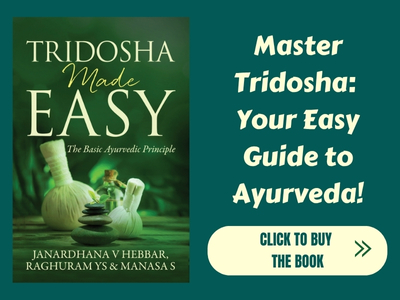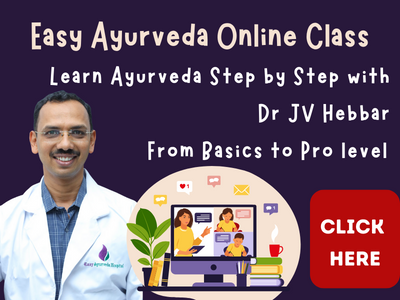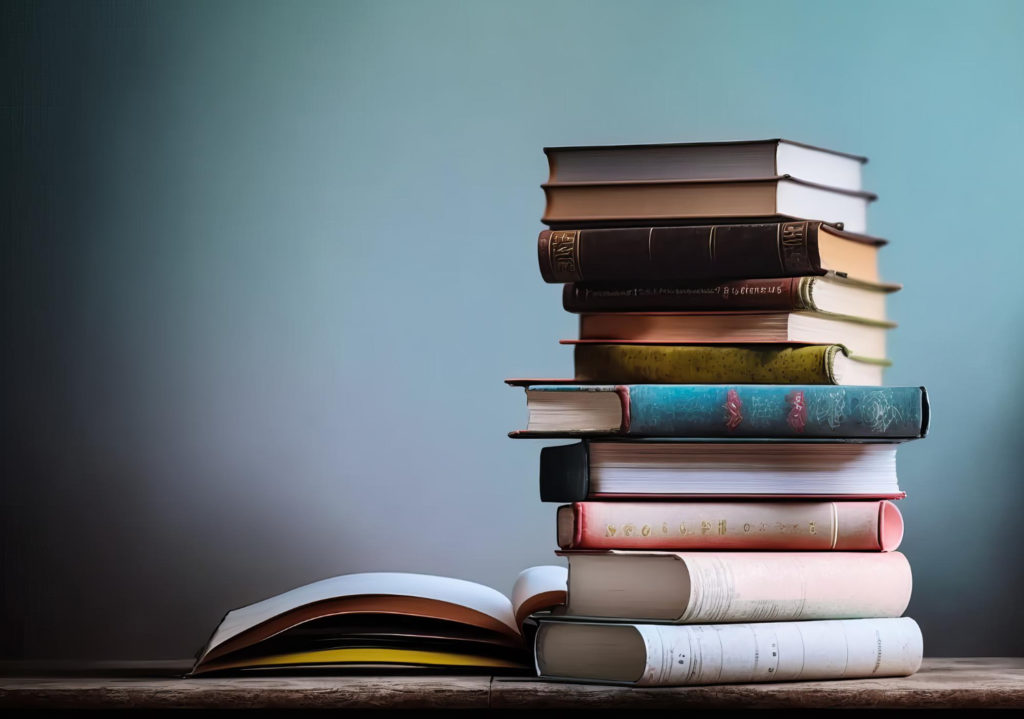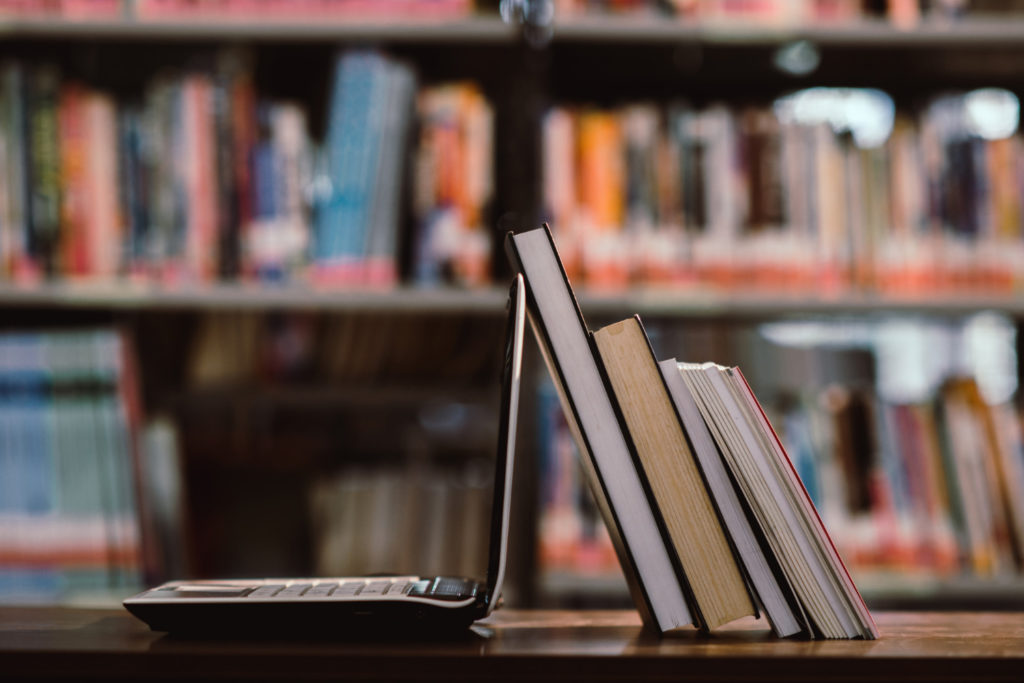Sushruta Samhita Chikitsasthana Chapter 4 Vātavyādhi Cikitsitam (Treatment of Neurological Diseases)
The 4th chapter of Chikitsasthana of Sushruta Samhita is named as Vātavyādhi Cikitsitam Adhyaya. This chapter deals with Treatment of Neurological Diseases.
अथातोवातव्याधिचिकित्सितंव्याख्यास्यामः।।१।।
यथोवाचभगवान्धन्वन्तरिः।।२।।
We will now expound Vātavyādhi cikitsita – treatment of diseases caused by (aggravated) vāta (diseases of the nervous system); as revealed by the venerable Dhanvantari.
Table of Contents
Āśayagata vāta cikitsă
आमाशयगतेवातेच्छर्दयित्वायथाक्रमम्।।
देय :षड्धरणोयोगःसप्तरात्रंसुखाम्बुना।।३।।
चित्रकेन्द्रयवेपाठाकटुकाऽतिविषाऽभया।।
वातव्याधिप्रशमनोयोगःषड्धरणःस्मृतः।।४।।
Chardana – In Amashayagata Vata i.e. aggravated vata lodged in the stomach – chardana / vamana – emesis therapy should be administered.
Shaddharana Yoga – After vamana, Shaddharana Yoga i.e. Shaddharana Churna should be given mixed with lukewarm water for a period of seven days. Alternatively warm decoction of Shaddharana Churna should be administered for the same number of days.
The formulation called Shaddharana Yoga or Churna is beneficial for mitigating vata vyadhis.
Preparation – This formulation is prepared with the below mentioned ingredients –
– Chitraka
– Indrayava
– Patha
– Katuka
– Ativisha
– Abhaya
Powder of each of the above said ingredients should be taken in a dose of one dharana each (approximately 750mg in quantity) and mixed together. This is called Shaddharana. It should be administered mixed with lukewarm water for seven days or should be administered in the form of Kashaya – decoction.
Benefit – This formulation is used to combat Vata disorders and is considered to be the best one in the business.
पक्वाशयगतेचापिदेयंस्नेहविरेचनम्।।
बस्तयःशोधनीयाश्चप्राशाश्चलवणोत्तराः।।५।।
कार्योबस्तिगतेचापिविधिर्बस्तिविशोधनः।।
श्रोत्रादिषुप्रकुपितेकार्यश्चानिलहाक्रमः।।६।।
Below mentioned should be administered for treating Pakvashayagata Vata i.e. vata lodged in and affecting Pakvashaya (colon) –
– Sneha virechana – oily purgatives,
– Shodana Vasti – purificatory enemas and
– Lavanottara prasha – foods with predominant salt taste
Even in case of Vastigata Vata i.e. vata lodged in and affecting Vasti / Basti (urinary bladder), Basti Shodhana Vasti i.e. bladder cleansing purificatory enemas should be administered.
Likewise, treatments prescribed for mitigating vata should be adopted in srotradigata vata i.e. vata affecting the ear and other sense organs.
Dhätugata väta cikitsa
स्नेहाभ्यङ्गोपनाहाश्चमर्दनालेपनानिच।।
त्वङूर्मासासृकूसिराप्राप्तेकुर्यात्चासग्विमोक्षणम्।।७।।
Below mentioned therapies should be adopted when Vata is located in and affects skin, muscles, blood, veins and arteries –
– Snehana – oleation,
– Abhyanga – herbal oil massage, oil bath,
– Upanaha – warm poultices,
– Mardana – massaging,
– Alepa – applying medicinal pastes on the body and
– Asrk mokshana – bloodletting
स्नेहोपनाहाग्निकर्मबन्धनोन्मर्दनानिच।।
स्नायुसन्ध्यस्थिसंप्राप्तेकुर्याद्वायावतन्द्रितः।।८।।
Below mentioned therapies are beneficial in treating Vata located in and affecting the ligaments, joints and bones and should be done without laxity as and when needed –
– Snehana – oleation
– Upanaha – warm poultices,
– Agnikarma – branding with fire / fire or thermal cautery
– Bandhana – bandaging,
– Unmardana – hard massage or massage with pressure, squeezing, kneading or trampling the body parts
निरुद्धेऽस्थनिवावायौपाणिमन्थेनदारिते।।
नाडीदत्त्वाऽस्थनिभिषक्चूषयेत्पवनंबली।।९।।
शुक्रप्राप्तेऽनिलेकार्यंशुक्रदोषचिकित्सितम्।।
Obstruction of vata inside the bones should be dealt with in the below mentioned way –
– The bone should be punctured with Panimantha – thick needle and
– Vata which has been obstructed in it should be sucked through a tube inserted into the hollow portion of the bone through the puncture
Likewise, treatments mentioned for purification of semen as explained in chapter 2 of Sarira Sthana section should be done to treat Sukragata Vata – the semen affected by vata.
अवगाहकुटीकप्रस्तराभ्यङ्गबस्तिभिः।।१०।।
जयेत्सर्वाङ्गजंवातंसिरामोक्षैश्चबुद्धिमान्।।
एकाङ्गगंचमतिमाञ्छङ्गैश्चावस्थितंजयेत्।।११।।
In Sarvanga Vata i.e. vata affecting the entire body / all parts of the body, the wise physician should administer the below mentioned therapies –
– Avagaha – tub bath or immersion in medicated liquids,
– Sveda – sudation
– Kuti – chamber sudation / staying in heated room
– Karsu Sweda – lying on heated ground and
– Prastara Sweda – lying on heated corn, husk etc. which have been spread on the ground
– Abhyanga – massage with medicated oils
– Basti / Vasti – medicated enemas and
– Siramoksa – bloodletting through venepuncture
In addition to the above-mentioned therapies, an intelligent physician should treat Ekangavata – affection of any one part of the body by aggravated vata – by using Srnga – bloodletting using sucking horns.
बलासपित्तरक्तैस्तुसंसृष्टमविरोधिभिः।।
सुप्तिवातेत्वसृङग्नोक्षंकुर्यात्तुबहुशोभिषक्।।१२।।
दिह्याच्चलवणागारधूमैस्तैलसमन्वितैः।।
Treatment should be given with respective therapies without antagonizing one another in conditions wherein vata is associated with kapha, pitta and rakta.
A wise physician should do raktamokshana – bloodletting many times in case of Suptivata – a condition caused by vata wherein there is loss of tactile sensation. Later the affected part should be smeared with paste of lavana – rock salt and agara dhuma – kitchen / chimney soot mixed in oil.
Ahara-food
पञ्चमूलीशृतंक्षीरंफलाम्लोरसएवच।।१३।।
सुस्निग्धोधान्ययूषोवाहितोवातविकारिणाम्।।
Below mentioned are beneficial as food / dietary supplements and should be served after adding more fat i.e. oil or ghee –
– Milk boiled with Pancamula
– Juice of sour fruits
– Meat soup
– Horse gram soup etc.
Sālvaņa upanāha (poultice)
काकोल्यादिःसवातघ्नःसर्वाम्लद्रव्यसंयुतः।।१४।।
सानूपौदकमांसस्तुसर्वस्नेहसमन्वितः।।
सुखोष्णःस्पष्टलवण :साल्वणःपरिकीर्तितः।।१५।।
तेनोपनाहंकुर्वीतसर्वदावातरोगिणाम्।।
Below mentioned are the main ingredients of Salvana Upanaha –
– Herbs belonging to Kakolyadi Gana group
– All Vataghna – vata mitigating herbs,
– All Amla Dravya – all herbs and things of sour taste,
– Anupa mamsa – meat of animals living in marshy regions
– Audaka mamsa – meat of animals living in water
– Sarva Sneha – all kinds of fats i.e. ghee, bone marrow, muscle fat and oil
– Spashta Lavana – added with lot of salt
All the above said ingredients are cooked together so as to form a soft mass out of them and used warm to provide poultice. This is known as Salvana Upanaha.
This paste shall be applied as upanaha – warm poultice always to those patients suffering from vata diseases and sudation given.
Treatment of contracted, painful or stiffened body part
कुञ्यमानंरुजार्तंवागात्रंस्तब्धमथापिवा।।१६।।
गाढंपट्टैर्निबध्नीयात्क्षौमकार्पासिकौर्णिकैः।।
बिडालनकुलोन्द्राणांचर्मगोण्यांमृगस्यवा।।१७।।
प्रवेशयेद्वास्वभ्यक्तंसाल्वणेनोपनाहितम्।।
Any part of the body which has been contracted is painful and static (stiff, rigid) should be subjected to abhyanga – massage or anointing with oil and applied with Salvana Upanaha. After this, that part should be bandaged tightly with bands of linen, cotton or wool or that part of the body should be inserted into a sling (sac) made from the skin of a cat, mongoose, otter or deer.
Treatment of vata affliction in shoulders, chest, upper back and nape of the neck
स्कन्धवक्षस्त्रिकप्राप्तंवायुमन्यागतंतथा।।१८।।
वमनंहन्तिनस्यचकुशलेनप्रयोजितम्।।
शिरोगतंशिरोबस्तिर्हन्तिवाऽग्विमोक्षणम्।।१९।।
स्नेहंमात्रासहस्रंतुधारयेत्तत्रयोगतः।।
An intelligent physician should administer vamana – emesis and nasya – nasal medication to cure the shoulders, chest, upper back or nape of the neck which has been affected by aggravated vata.
Shirovasti – pooling of oil on the head or Raktamokshana – bloodletting should be administered to cure shirogata vata i.e. aggravated vata located in and affecting the head. While doing Shirovasti, oil should be retained on the head for one thousand matrakala. Matrakala is the period of time required to utter a vowel.
Treatment of Sarvanga Vata and Ekanga Vata
सर्वाङ्गगतमेकाङ्गस्थितंवाऽपिसमीरणम्।।२०।।
रुणद्धिकेवलोबस्तिर्वायुवेगमिवाचलः।।
Basti / Vasti i.e. medicated enema alone is enough to control vata when it is localized in either the whole body or any one part of the body, just like the mountain which controls the bouts of wind.
Vāta sämāñya cikitsa – general treatments for vata
स्नेहस्वेदस्तथाऽभ्यङ्गोबस्तिःस्नेहविरेचनम्।।२१।।
शिरोबस्तिःशिरःस्नेहोधूमःस्नैहिकएवच।।
सुखोष्णःस्नेहगण्डूषोनस्यंस्नैहिकमेवच।।२२।।
रसाःक्षीराणिमांसानिस्नेहा :स्नेहान्वितंचयत्।।
भोजनानिफलाम्लानिस्निग्धानिलवणानिच।।२३।।
सुखोष्णाश्चपरीषेकास्तथासंवाहनानिच।।
कुङ्कुमागुरुपत्राणिकुष्ठैलातगराणिच।।२४।।
कौशेयौर्णिकरौमाणिकार्पासानिगुरूणिच।।
निवातातपयुक्तानितथागर्भगृहाणिच।।२५।।
मृद्वीशय्याऽग्निसंतापोब्रह्मचर्यंतथैवच।।
समासेनैवमादीनियोज्यान्यनिलरोगिषु।।२६।।
Below mentioned are included in the general line of treatment of aggravated Vata –
Therapies – below mentioned therapies should be done warm –
– Sneha – oleation or lubricating therapies
– Sweda – sudation
– Abhyanga – herbal oil massage, oil bath
– Basti / Vasti – medicated enema
– Sneha virechana – oily/ unctuous purgatives
– Sirovasti / Shirobasti – oil pooling over the head
– Shiro Sneha – oiling the head,
– Snaihika dhuma – lubricating smoke inhalation,
– Sneha gandusha – unctuous mouth gargles
– Snaihika nasya – unctuous oily drops instilled in the nose
Foods including –
– meat soup,
– milk,
– meat added with oil or ghee,
– juice of sour fruits
– fatty foods
– salty foods
Other inclusions in the treatment –
– pouring comfortably warm liquids on the body,
– covering the body with thick cloth made of leaves of plants including kumkuma, aguru, kustha, ela and tagara,
– clothes – made of silk, wool or thick cotton clothes shall be used,
– staying inside the deep inner or underground chambers devoid of breeze and with little bit of sunlight / sun heat,
– sleeping on soft beds,
– exposure to the heat of the sun, and
– maintaining celibacy (avoiding copulation)
All the above said treatments and measures in brief shall be adhered to in treating all the diseases caused by vata.
Tilvaka ghrta
त्रिवृद्दन्तीसुवर्णक्षीरीसप्तलाशङ्खिनीत्रिफलाविडङ्गानापक्षसमाःभागाः,कल्कस्तिल्वकमूलकम्पिल्लकयोः,त्रिफलारसदधिपात्रेद्वेद्वे,घृतपात्रमेकं,तदैकयसंयुज्यविपचेत्;तिल्वकसर्पिरेतत्स्नेहविरेचनमुपदिशन्तिवातरोगिषु।तिल्वकविधिरेवाशोकरण्यकयोर्द्रष्टव्यः।।२७।।
One aksa / karsa (10-12 grams approximately) each of –
– Trivrt
– Danti
– Suvarnaksiri
– Saptala
– Sankhini
– Triphala and
– Vidanga
One bilva (40 grams) each of –
– Tilvaka
– Mulaka and
– Kampillaka
2 adhaka (adhaka = 5.12 kg) each of –
– Triphala Rasa – decoction of Triphala and
– Dadhi – curds
One patra (2.56 kg) – ghrta – ghee
All the above-mentioned ingredients should be cooked together and medicated ghee prepared. This ghee is known as Tilvaka Sarpi / Ghrta. It is used as an unctuous purgative in all kinds of Vata disorders. Similarly, medicated ghee prepared with Asoka and Ramyaka also shall be used for the same purpose.
Anu taila
तिलपरिपीडनोपकरणकाष्ठान्याहृत्यानल्पकालंतैलपरिपीतान्यनिखण्डश :कल्पयित्वाऽवक्षुद्यमहतिकटाहेपानीयेनाभिप्लाव्यक्वाथयेत्,ततःस्नेहमम्बुपृष्ठाद्यदुदेतितत्सरकपाण्योरन्यतरेणादायवातघ्नौषधप्रतीवापंस्नेहपाककल्पेनविपचेत्,एतदणुतैलमुपदिशन्तिवातरोगिषु;अणुभ्यस्तैलद्रव्येभ्योनिष्पाद्यतइत्यणुतैलम्।।२८।।
A wooden pestle of an oil mill i.e. sesame is obtained. This should have been in usage for a long time. Now this pestle should be cut into small pieces, almost to powder-like minuteness. This piece / powder is put into a big iron cauldron. The cauldron is now filled with water and is boiled. The layer of oil that rises to the surface of the water after it has been boiled for some time is separated with a sieve and taken out. Vata mitigating herbs are added to the oil and medicated oil is prepared. This is known as Anu Taila. It is beneficial for usage in all the Vata Rogas. It is called Anu Taila because it is prepared from minute pieces (anu = minute) of the oily material.
Sahasrapāka taila
अथमहापञ्चमूलकाष्ठैर्बहुभिरवदह्यावनिप्रदेशमसितमुषितमेकरात्रमुपशान्तेऽग्नावपोहभस्मनिवृत्तांभूमिविदारिगन्धादिसिद्धेनतैलघटशतेनतुल्यपयसाऽभिषिच्यैकरात्रमवस्थाप्यततोयावतीमृत्तिकास्निग्धास्यात्तामादायोष्णोदकेनमहतिकाटहेऽभ्यासिञ्चेत्,तत्रयत्तैलमुत्तिष्ठेत्तत्पाणिभ्यांपर्यादायस्वनुगुप्तंनिदध्यात्;ततस्तैलंवातहरौषधक्वाथमांसरसक्षीराम्लभागसहस्त्रेणसहस्रपाकंविपचेद्यावताकालेनशक्नुयात्पक्तुं,प्रतिवापश्चात्रहैमवतादक्षिणापथगाश्चगन्धावातघ्नानिच,तस्मिन्सिध्यतिशङ्खानाध्यापयेहन्दुभीनाघातयेच्छत्रंधारयेद्वालव्यजनैश्चवीजयेबाह्मणसहस्रंभोजयेत्,तत्साधुसिद्धमवतार्यसौवर्णेराजतेमृन्मयेवापात्रेस्वनुगुप्तंनिदध्यात्,तदेतत्सहस्रपाकमप्रतिवारवीर्यंराजाहतैलम्;एवंभागशतविपक्वंशतपाकम्।।२९।।
A plot of ground with black soil is selected. On this ground, the pieces of wood of Mahat (Brihat) Panchamula are placed and the wood is set on fire.
One hundred ghata (drona – 10.24 kg) of sesame oil should be taken. Next day, the plot of black soil on which the woods of Pancamula were burnt is drenched with this sesame oil and allowed for one day. Before this, the sesame oil should have been boiled and prepared with herbs belonging to Vidarigandhadi Gana group of herbs and equal quantity of milk.
Once the soil becomes very unctuous due to the oil poured on it, it should be taken out and put into a big pot. This pot is now filled with hot water.
After some time, the oil begins to float on water. The floating oil is collected by the hands separately and kept. Next, it is added with decoction of vata mitigating herbs, meat soup and milk and amla kanjika, each four times the quantity of oil. Now the oil is cooked.
Pastes of fragrant herbs collected from Himalayan regions and also from Daksinapatha – south India are added and medicated oil is cooked. Vata mitigating herbs are also added while cooking. The oil is cooked for one thousand times in as many days as required.
When the oil is cooked well, it should be paraded with respect. Parading of oil should be done by blowing conches, beating kettle drums and holding an umbrella. It should be fanned with fly whisks. One hundred Brahmanas should be fed with meals. The prepared oil is later stored in golden, silver or mud vessels and safely preserved. This is called Sahasrapaka Taila – oil cooked for a thousand times. It is a very efficacious medicine and is well suited for kings. This oil, when cooked for a hundred times, is known by the name Satapaka Taila.
Patra lavana
गन्धर्वहस्तमुष्ककनक्तमालाटरूषकपूतीकारग्वधचित्रकादीनांलवणेनसहोदूखलेऽवक्षुधस्नेहघटेप्रक्षिप्यावलिप्यगोशनिहियेत्,एतत्पत्रलवणमुपदिशन्तिपत्राण्यााणिवातरोगेषु।।३0 ।।
Moist leaves of the below mentioned herbs shall be collected –
– Gandharvahasta
– Muskaka,
– Naktamala,
– Atarusa,
– Putika,
– Aragvadha,
– Citraka etc
These herbs are cut into pieces. Equal quantity of saindhava – rock salt is added to it and pounded well in the mortar. This paste is now put into a pot whose inside has been smeared with fat (oil). It is now cooked with the fire of cow-dung heaps. This is known as Patra Lavana. This is very useful in all the Vatarogas. it shall be used either along with food or as poultice.
Sneha lavana – kändalavana
एवंस्तुहीकाण्डवार्ताकुशिलवणानिसंक्षुधघटेपूरयित्वासर्पिस्तैलवसामज्जभिःप्रक्षिप्यावलिप्यगॊशाकृद्रिर्दाहयेत्ःएतत्स्नेहलवणमुपदिशान्तिवातरोगेषु।।(हतिकाण्डलवणम्)।।३१।।
Below mentioned are collected –
– Snuhikanda
– Vartaka
– Sigru and
– Lavana
They are all pounded and put in a pot. To this, ghee, oil, muscle fat and marrow are added. These ingredients are cooked with the fire of cow dung heaps. This Sneha Lavana (Kanda Lavana) is indicated in all Vata Rogas.
Kalyanaka lavana
गण्डीरपलाशकुटजबिल्वार्कस्नुह्यपामार्गपाटलापारिभद्रकनादेयीकृष्णगन्धानीप-नियनिर्दहन्याटरूषकनक्तमालकपूतिकबृहतीकण्टकारिकाभल्लातकेङ्गुदीवैजयन्ती-कदलीबाष्पद्वयेश्चरकेन्द्रयारुणीश्वेतमोक्षकाशोकाइत्येवंवर्गसमूलपत्रशाखमामाहृत्यलवणेनसहसंसृज्यपूर्ववन्ध्याक्षारकल्पेनपरित्राव्यविपचेत्,प्रतिवापश्चात्रहिङ्ग्वादिभिःपिप्पल्यादिभिर्वा।इत्येतत्कल्याणकलवणंवातरोगगुल्मप्लीहाग्निषङ्गाजीर्णार्थोऽरोचकार्तानांकासादिभिःकृमिभिरुपद्वतानाचोपदिशन्तिपानभोजनेष्वपीति।।३२।।
भवतिचात्र –
विष्यन्दनादुष्णभावाहोषाणांचविपाचनात्।।
संस्कारपाचनाच्चेदंवातरोगेषुशस्यते।।३३।।
Moist roots, leaves and branches (twigs) of the below mentioned herbs are collected –
– Gandira,
– Palasa,
– Kutaja,
– Bilva,
– Arka,
– Snuhi,
– Apamarga,
– Patala,
– Paribhadraka,
– Nadeyi (jalajambu),
– Krshnagandha,
– Nipa,
– Nimba,
– Nidrahani (morata),
– Atarusaka,
– Naktamalaka,
– Putika,
– Brhati,
– Kantakarika,
– Bhallataka,
– Ingudi,
– Vaijayanti,
– Kadali,
– Baspadvaya (2 kinds of Baspika),
– Iksuraka,
– Indravaruni,
– Sveta moksaka and
– Asoka
They are mixed with Saindhava lavana – rock salt, equal in quantity and cooked in a similar way as before.
The ash of the same is collected. It is mixed with water and then filtered. To this, powder of herbs of Hingvadi Gana or Pippalyadi Gana group of herbs is also added. All these are cooked together in the method of preparing ksara – alkalis. This is known as Kalyanaka Lavana.
Indications – Kalyanaka Lavana is used in the below mentioned conditions –
– In treatment of all kinds of Vataroga – along with food and drinks,
– Abdominal tumours
– Diseases of spleen,
– Dyspepsia,
– Indigestion,
– Piles,
– Anorexia,
– Cough,
– Intestinal worms
It is beneficial in all the Vatarogas since it produces moisture inside the body, is of hot potency, causes ripening of doshas and is cooked with other herbs.
इतिश्रीसुश्रुतसंहितायांचिकित्सास्थानेवातव्याधिचिकित्सितंनामचतुर्थोऽध्यायः।।४।।
Thus ends the fourth chapter by name Vātaroga Cikitsita in Cikitsā Sthāna of Suśruta Samhita.









